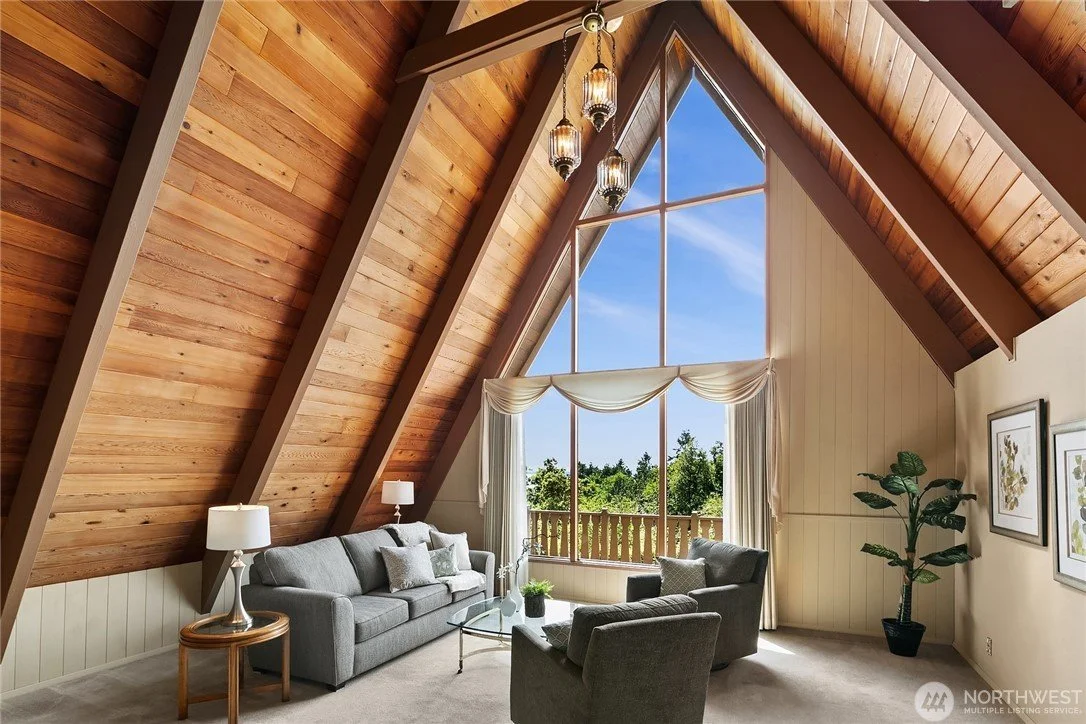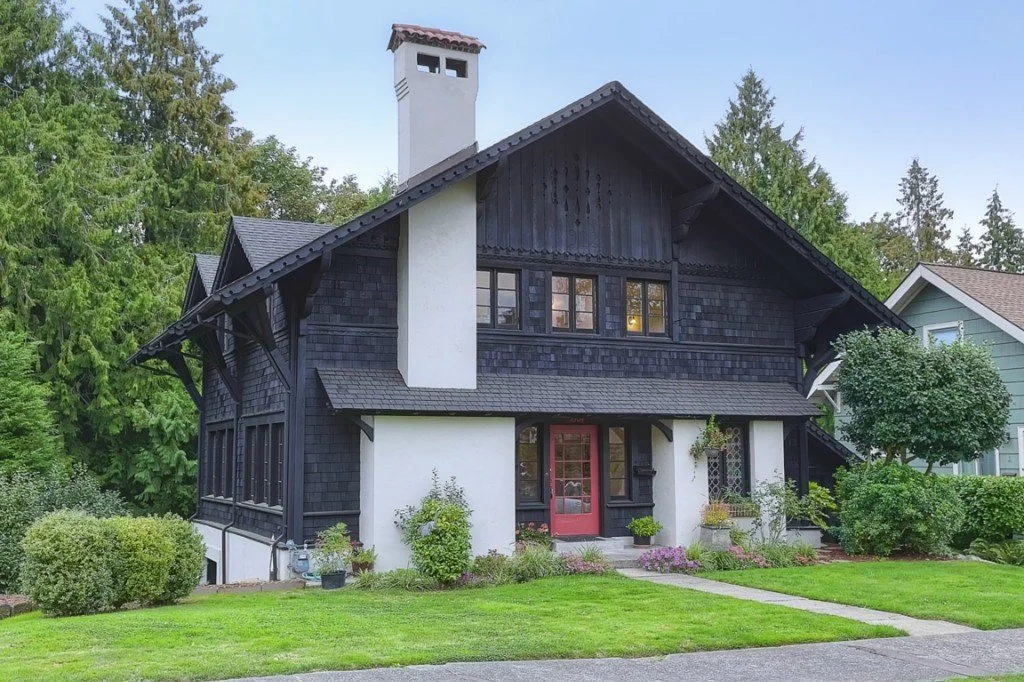ALPINE AMBITIONS: Chalet Style in the Pacific Northwest
Every so often a roofline in the Northwest leans steeply skyward, its broad eaves casting long shadows. These are chalets — a motif that began in the Swiss Alps as sturdy mountain shelters, then crossed oceans and decades to settle among our cedars and suburbs.
In the early 20th century, Americans fell in love with the Swiss chalet design. Pattern books praised timber balconies, carved brackets and projecting eaves as picturesque and in harmony with nature. Contemporary observers admired these early chalets for snow protection, shade, comfort and rustic charm. Washington’s preservation authorities note surviving examples in Seattle, Tacoma, Spokane and Olympia.
After World War II, chalets shifted from novelty to mainstream leisure homes. By the 1950s, alpine cabins dotted Lake Chelan, Mount Baker, and Snoqualmie Pass. Middle class families built these study A-frames, often with interior loft levels, as weekend sanctuaries, little triangles of wood and glass that captured the optimism of mid-century leisure culture.
By the 1970s, the chalet leapt from ski towns into cul-de-sacs and city hillsides. Pattern and spec builders borrowed its drama — beams like tree trunks, windows like cliff faces — and gave it a Northwest twist with daylight basements and open plans.
From the Swiss Chalet Revival of 1900–1925, through the mid-century leisure boom, to the cedar-clad homes into the 1970s and ‘80s chalet architectural forms reveal the Pacific Northwest’s tendency to borrow and reinterpret. In Europe, chalets were heavy — stone bases and timbers to survive harsh winters. In the postwar era, informed by Modernism and freed by more nimble constructions methods and materials, this European architectural form grew lighter, filled with glass, and opened wide to the region’s abundant views of the Cascades and Olympics Mountains as well as the regions lakes and waterways including Puget Sound.
Like Moorish arches that once adorned American theaters, chalet architecture tells a story of cultural longing. Americans have always imported design forms from faraway places, only to reshape them to fit our own evolving ideals and aspirations. Today, chalet-style rooflines stand alongside Craftsman porches and mid-century glass boxes as part of our eclectic regional story. Some feel dated, others surprisingly current. All remind us that architecture begin with shelter and extends toward imagination.
So, the next time you pass through Fort Lewis, Stevens Pass, or Portland’s West Hills, or even Seattle’s Queen Anne Hill, look for an occasional steep roofline tilting up against the trees. These tidbits of the Alps in miniature reveals the Pacific Northwest as a place forever finding ways to weave the world into its own landscapes.
For Further Learning:
The Swiss Chalet Book: An Elegant Guide to Architecture and Design by William S. B. Dana (1913) – A classic text with measured drawings and commentary on early 20th-century Swiss-inspired homes in America.
All About Chalets: Contemporary Mountain Residences by Sibylle Krämer – A global survey showing how modern architects reinterpret traditional Alpine forms for today’s mountain settings.
Chalet Architecture + Design edited by Michelle Galindo – A visual compendium of post-war and contemporary chalets illustrating how materials, siting, and views have evolved.
Washington State Department of Archaeology & Historic Preservation: Swiss Chalet Revival – Concise overview of how this architectural style took root in the Pacific Northwest.






